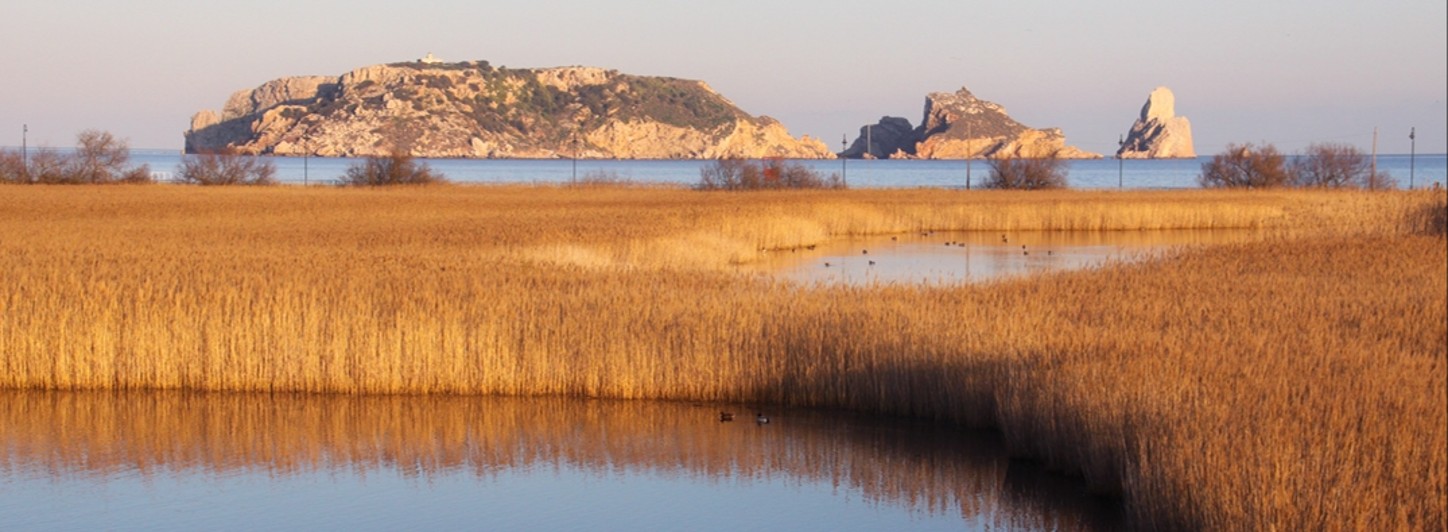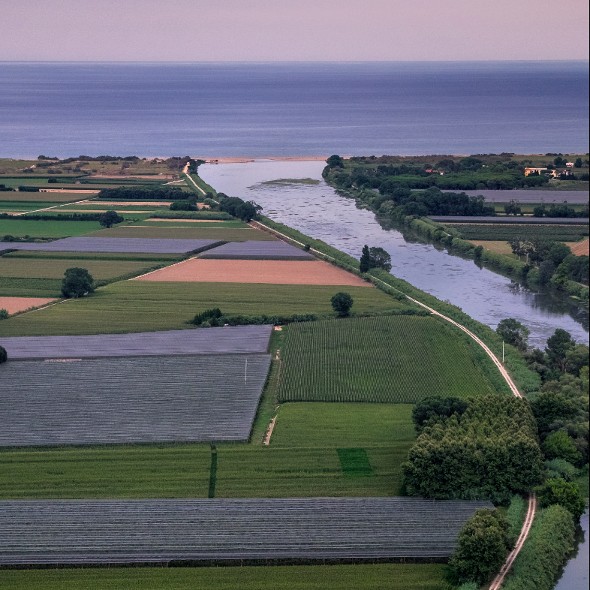Baix Ter

The Baix Ter
The river Ter flows into the Mediterranean at Gola del Ter, to the south of L’Estartit, where it culminates a 208 km route. Nearby are the Ter Vell wetlands, the Pletera and the Coll ponds, a group of coastal lagoons. In this final stretch, the river forms a beautiful mosaic of colours created from canals and waterways bordering the grain fields, fruit orchards and rice paddies, ideal for enjoying an excursion on foot, by bike or on horseback.

An ecoparadise at the mouth of the Ter river
The river, wetlands and agricultural plain
The Ter is life
The final stretch of the river Ter functions like a typical Mediterranean estuary. The mixture of fresh and salt water creates variable conditions of salinity and nutrients. This is the home of the freshwater blenny —a small protected, albeit odd, fish— and in the canals, we find freshwater mussels. These are also eel fishing grounds. The banks are populated by ashes, elms, willows and poplars. Where there is greater salinity, there are tamarisks and reeds.
Wetlands and marshes, reservoirs of biodiversity
The freshwater wetlands were created from the convergence of the rivers Ter and Daró and the action of sea currents. The reeds and bullrush are a refuge for many species. Mallards, grebes, grey herons, egrets, bitterns and marsh harriers can be spotted, but also turtles, amphibians, fish (like the highly endangered Iberian killifish) and of some mammals (such as the otter). The marshes are lowlands behind the line of dunes along the beaches, whose low elevations are easily flooded when there is heavy rain or storms blowing in from the sea. The salinity of the soils gives rise to a unique landscape of salicornia and rushes, a tapestry in green and reddish brown.
The rice fields and the agricultural plain
The crop fields are the most characteristic feature of the Baix Ter river plain, with a mosaic of irrigated and dry land and numerous farmhouses, some with defence towers (from the 15th century, to ward off pirates) and many declared Cultural Assets of National Interest. Rice has a long tradition in Torroella de Montgrí and Pals, and rice fields are the source of food for many birds such as storks, herons and various waders.







